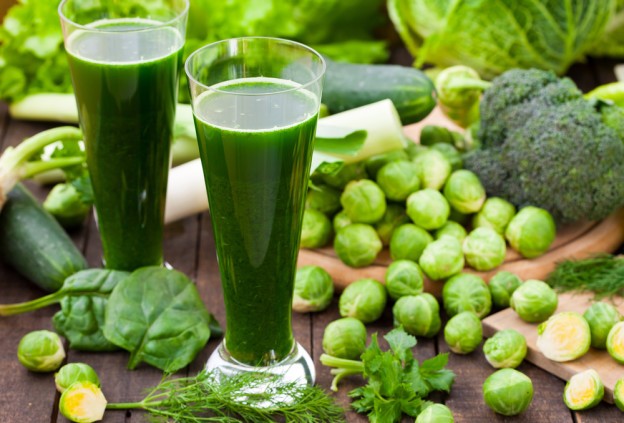After I had read the results of the following study, I was amazed how one spice can beat the effectiveness of chemotherapy by 10,000 times. In fact, this is awesome news as the impact of conventional chemotherapy on stem cells is very controversial because of its serious side effects which kill not only cancerous but unfortunately also healthy stem cells. Honestly, this spice can be called a super spice without exaggeration. If this is not a crucial part of your daily dietary habits, you are missing out on a whole bunch of health benefits. I am talking about ginger. There isn’t probably a day that I don’t include ginger to my diet. Just before I sat down to write this article I enjoyed a hot and delicious ginger tea. There are at least 20 health benefits that are linked to ginger, such as reducing and soothing arthritic inflammation, enhancing circulation, relieving sinuses and pain in general. Ginger has even the power to battle the most devastating diseases, such as Alzheimer and cancer, in a way you might never thought possible. Taking one spice resulting in twenty health benefits makes ginger virtually a super spice. Make sure to read the following article very carefully and you will be amazed how this so often underestimated and falsely ignored spice can rev the functionality of your entire body.
Ginger naturally contains a compound that is up to 10,000 times more effective than chemotherapy drugs at killing the cancer stem cells that make malignant tumors so dangerous, according to a study published in the journal PLoS.
The chemical, known as 6-shogaol, is produced when ginger roots are dried or cooked. The researchers found that 6-shogaol is active against cancer stem cells at concentrations that are harmless to healthy cells. This is dramatically different from conventional chemotherapy, which has serious side effects largely because it kills healthy as well as cancerous cells.
Cells responsible for 90 percent of cancer death?
Like other stem cells, cancer stem cells possess the ability to differentiate into various different cell types. In the case of cancer, stem cells differentiate into the various malignant cells that make up a tumor colony. Although they make up less than 1 percent of the cells in any given tumor, stem cells are impervious to nearly all known or experimental chemotherapy agents. These cells are also able to replicate indefinitely, and they are capable of splitting off from their originating colony to start new tumors elsewhere. They are key players in the process of metastasis, which is responsible for 90 percent of cancer-related deaths.
The persistence of cancer stem cells also explains why cancers can recur even after seemingly successful tumor eradication via chemotherapy, radiation or surgery.
“Cancer stem cells pose serious obstacle to cancer therapy as they can be responsible for poor prognosis and tumour relapse,” the researchers wrote. “To add into the misery, very few chemotherapeutic compounds show promise to kill these cells.”
Kills cancer cells on many fronts
The researchers found that 6-shogaol targets breast cancer stem cells along several different pathways, including reducing the expression of surface markers, altering the cell cycle to increase the rate of cell death, inhibiting tumor formation, directly inducing programmed cell death, and flat-out poisoning cancer stem cells (cytotoxicity).
The researchers then compared the cytotoxicity of 6-shogaol against human breast cancer stem cells with that of the widely used chemotherapy drug taxol. They found that while taxol did show cytotoxicity in a one-dimensional laboratory model of cancer (“monolayer”), it showed almost no effect in the three-dimensional (“spheroid”) model that is now believed to be a more accurate model of real-world cancer tumors. 6-shogaol, however, was effective in both the monolayer and spheroid models.
The researchers then increased the taxol concentration by 10,000 times, but it still showed no effectiveness in spheroid model.
“[T]axol, even though was highly active in monolayer cells, did not show activity against the spheroids even at 10,000 fold higher concentration compared to 6-shogaol,” the researchers wrote.
The promise of food-based cures
The fact that 6-shogaol naturally occurs in a widely consumed human food is promising for its safety profile, the researchers noted.
“Dietary compounds are welcome options for human diseases due to their time-tested acceptability by human bodies,” they wrote.
Another food-based chemical that has shown promise against cancer stem cells is phenethyl isothiocyanate (PEITC). This chemical is produced from the reaction of a compound and an enzyme that occur in cruciferous vegetables, such as broccoli and cabbage. This reaction actually takes place simply when the vegetables are chewed, which means that eating cruciferous vegetables causes the human body to be exposed to PEITC.
According to a May 2015 press release by researchers from the South Dakota State University Department of Health and Nutritional Sciences, PEITC has been successful at killing cervical cancer stem cells. The concentrations used in the study are actually achievable simply from a diet rich in cruciferous vegetables, the researchers said. The vegetables highest in PEITC potential are watercress and land cress.
This research suggests that PEITC, and possibly even a diet rich in cruciferous vegetables, could assist in the prevention of or recovery from cancer.
Source: Natural News
[nextpagelink][/nextpagelink]







